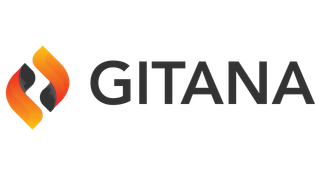Found 195 results for "security teams"
The search executed in 0.0019 seconds. That's fast.

|
Create a RoleSupport Article Create custom roles in Cloud CMS to manage security, access, and UI customization for your organization. (Support 1.0)
Score: 1.6887
|

|
Gitana 4.0 / Reference / Types / ApplicationDocumentation Reference Effortlessly manage your application's data, users, email services, and configurations with our robust platform. (Gitana 4.0)
Score: 1.6635
|

|
How do I retrieve the folder path for my content?Support Article Retrieve content paths in Cloud CMS easily via API; enhance editorial workflow with flexible folder support. (Support 1.0)
Score: 1.6628
|

|
Gitana 3.2 / Guide / Guide / API / Data Types / Authentication GrantDocumentation Reference Explore Authentication Grants to securely distribute and configure user authentication credentials without exposing sensitive information. (Gitana 3.2)
Score: 1.5965
|

|
Gitana 3.2 / Guide / Guide / Getting Started / WorkspacesDocumentation Reference Collaborate efficiently by creating and managing content within isolated workspaces, ensuring seamless team interaction. (Gitana 3.2)
Score: 1.5758
|

|
Gitana 4.0 / Getting Started / Working with Content / BranchesDocumentation Reference Manage content with branches in Cloud CMS, enabling isolated changes, teamwork, and streamlined collaboration. (Gitana 4.0)
Score: 1.5758
|

|
Difference between an Application and a ProjectSupport Article Discover the key differences between Projects and Applications in Cloud CMS, from organization to user-focused delivery solutions. (Support 1.0)
Score: 1.5758
|

|
Gitana 3.2 / Guide / Guide / UI Developers Guide / ContextsDocumentation Reference Explore how Cloud CMS uses browser-side configurations for tailored page renderings with extendable context keys. (Gitana 3.2)
Score: 1.5703
|

|
Gitana 4.0 / Developers / User Interface Customization / ContextsDocumentation Reference Explore Cloud CMS context configurations and extend your UI by adding custom actions, navigation items, and enriching dashboards. (Gitana 4.0)
Score: 1.5703
|

|
Gitana 3.2 / Guide / Guide / Authentication / OAuth 2.0Documentation Reference Securely integrate OAuth2 with Cloud CMS for your apps, featuring top industry practices for robust authentication. (Gitana 3.2)
Score: 1.4928
|

|
Gitana 4.0 / Developers / Authentication / OAuth 2.0Documentation Reference Discover the power of OAuth 2.0 for secure server authorization with Cloud CMS. Simplify authentication for web and mobile apps. (Gitana 4.0)
Score: 1.4928
|

|
AI Readiness Begins with DataBlog Post Unlock your AI potential with structured, reliable content data. Build a data foundation that transforms your CMS into a powerful AI-ready platform.
Score: 1.4908
|

|
Quick Start - GitanaWeb Page Quick Start - Gitana Status Releases Support Platform Platform Manage, collaborate, search and distribute your highly-structured content across branches, versions and workflow-driven lifecycle. Cloud CMS Create, Approve and Publish quality content to production on-time. Easy editorial and workflow tools let your best work reach your customers. Automation Automate your content creation and approval flows while taking advantage of AI services to enhance and curate content. Publishing Source and de
Score: 1.4879
|

|
A Data Product approach to AI Content ManagementBlog Post Optimize AI-driven content management with data products to enhance efficiency, personalization, and content quality, fostering innovation and growth.
Score: 1.4242
|

|
Gitana 3.2 / Guide / Guide / Multifactor Authentication / Providers / Twilio AuthyDocumentation Reference 'Set up Twilio Authy for secure multifactor authentication in Cloud CMS with our detailed configuration guide.' (Gitana 3.2)
Score: 1.4068
|

|
Gitana 4.0 / Content Engine / Multifactor Authentication / Providers / Twilio AuthyDocumentation Reference Enable secure multifactor authentication with Twilio Authy in Cloud CMS. Configure API settings for robust protection. (Gitana 4.0)
Score: 1.4068
|

|
Advanced Content Modeling options (example)Support Article Optimize content modeling with JSON Schema for tailored product descriptions using Category-linked schemas. Enhance with UI extensions or sub-types. (Support 1.0)
Score: 1.4068
|

|
Gitana 3.2 / Guide / Guide / User Interface / WorkflowDocumentation Reference Optimize team collaboration and document management with Cloud CMS's powerful workflow engine. (Gitana 3.2)
Score: 1.3511
|

|
Gitana 4.0 / User Interface / WorkflowDocumentation Reference Enterprise workflow engine by Cloud CMS streamlines tasks for teams, enhancing document management with Amazon AWS and MongoDB integration. (Gitana 4.0)
Score: 1.3511
|

|
Gitana 4.0 / Reference / Types / BranchDocumentation Reference Manage content with Branch: create, isolate, share projects, and track changes seamlessly. (Gitana 4.0)
Score: 1.3331
|

|
Gitana 3.2 / Guide / Guide / Application Server / Authentication / Providers / LocalDocumentation Reference Optimize local user authentication in your App Server with configurable identity providers using Node.js. (Gitana 3.2)
Score: 1.3263
|

|
Gitana 4.0 / Developers / Application Server / Authentication / Providers / LocalDocumentation Reference Enable secure local authentication in Node.js apps with Cloud CMS App Server. Integrate custom identity provider. (Gitana 4.0)
Score: 1.3263
|

|
Product Releases - GitanaWeb Page Product Releases - Gitana Status Releases Support Platform Platform Manage, collaborate, search and distribute your highly-structured content across branches, versions and workflow-driven lifecycle. Cloud CMS Create, Approve and Publish quality content to production on-time. Easy editorial and workflow tools let your best work reach your customers. Automation Automate your content creation and approval flows while taking advantage of AI services to enhance and curate content. Publishing Source a
Score: 1.3077
|

|
Gitana 3.2 / Guide / Guide / API KeysDocumentation Reference Access and manage your Cloud CMS API Keys effortlessly. Secure your data with client and user credentials. (Gitana 3.2)
Score: 1.2894
|

|
Gitana 3.2 / Guide / Guide / Integrations / IBM API ConnectDocumentation Reference Optimize your API workflow with IBM API Connect, the scalable, intuitive platform for managing APIs across clouds effectively. (Gitana 3.2)
Score: 1.2894
|
